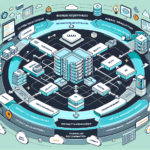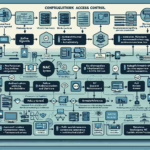Integrating your IT infrastructure with an Identity and Access Management (IAM) solution is crucial for enhancing security, improving operational efficiency, and ensuring compliance. Here’s a step-by-step guide to achieving this integration effectively:
1. Assess Your IT Infrastructure and IAM Requirements
- Inventory Your Infrastructure: Document servers, storage systems, virtualization platforms, Kubernetes clusters, and cloud resources.
- Define Access Needs: Identify which systems and applications require IAM integration, and understand access patterns for each.
- Evaluate Compliance Requirements: Ensure IAM integration aligns with regulatory requirements (e.g., GDPR, HIPAA, ISO 27001).
2. Choose the Right IAM Solution
- Decide between cloud-based IAM (e.g., Azure AD, AWS IAM, Okta) or on-premises IAM (e.g., Microsoft Active Directory, FreeIPA).
- Evaluate IAM solutions for compatibility with your IT stack, such as Windows/Linux servers, Kubernetes, virtualization, and AI workloads.
- Ensure the IAM system supports modern authentication standards like OAuth 2.0, SAML, and OpenID Connect.
3. Implement Role-Based Access Control (RBAC)
- Design a Role-Based Access Control (RBAC) model that maps user roles to permissions across infrastructure components.
- For example:
- Windows/Linux Servers: Use Active Directory or FreeIPA for centralized authentication and map roles to file/share permissions.
- Kubernetes: Integrate with IAM to manage roles and permissions using Kubernetes RBAC.
- Virtualization Platforms: Grant access based on user roles (e.g., read-only, admin) in tools like VMware vSphere or Hyper-V.
4. Centralize Authentication Across Systems
- Integrate core infrastructure components with a centralized directory (e.g., Microsoft Active Directory or LDAP).
- Windows/Linux Servers: Use Kerberos or LDAP for authentication.
- Kubernetes: Configure Kubernetes API Server to use an IAM-backed authentication plugin or OIDC.
- Storage Systems: Connect NAS/SAN solutions like NetApp or Dell EMC to centralized IAM for user authentication.
- Virtualization: Configure your hypervisor management tools to authenticate against the IAM system.
5. Enable Multi-Factor Authentication (MFA)
- Enforce MFA for accessing critical systems, such as:
- Datacenter management interfaces (e.g., iDRAC, HPE iLO).
- Cloud platforms (e.g., AWS, Azure, GCP).
- Kubernetes clusters and CI/CD pipelines.
- Integrate MFA with your IAM solution to ensure seamless user experience.
6. Integrate IAM with IT Infrastructure Management Tools
- Connect IAM to monitoring, backup, and automation tools:
- Backup Solutions: Configure IAM-based authentication for backup systems like Veeam, Commvault, or Rubrik.
- Monitoring Tools: Use IAM for authentication in tools like Prometheus, Grafana, or Zabbix.
- Automation/Orchestration: Securely manage API keys and credentials for tools like Ansible, Terraform, or Jenkins.
7. Implement Fine-Grained Access Controls
- Use IAM policies to define granular access:
- Restrict GPU access in Kubernetes for AI/ML workloads to specific users or groups.
- Apply storage quotas per user or group to prevent resource abuse.
- Limit admin privileges on virtualization platforms and servers to authorized staff.
8. Leverage Audit and Logging
- Enable auditing and logging for all IAM-integrated systems:
- Log access attempts, role changes, and policy updates for compliance.
- Use tools like Splunk, ELK Stack, or native IAM logging to monitor user activity.
- Ensure logs are centralized and analyzed for suspicious behavior (e.g., brute force attempts, privilege escalation).
9. Automate Provisioning and Deprovisioning
- Configure IAM to automatically provision and deprovision access based on user lifecycle events (e.g., onboarding, role changes, offboarding).
- Use tools like Azure AD Connect or Okta Workflows to sync user roles and permissions across on-premises and cloud environments.
10. Secure API Access
- For infrastructure components with APIs (e.g., Kubernetes, storage systems), use IAM to manage API keys and tokens.
- Use IAM tools to enforce least privilege for service accounts and API consumers.
11. Regularly Review IAM Policies
- Periodically review and update IAM policies to ensure they align with current business needs and security best practices.
- Use tools like IAM policy simulators (AWS IAM Policy Simulator, Azure AD Conditional Access) to test policies without impacting production.
12. Educate Your Team
- Train IT staff and end-users on IAM best practices, such as:
- Recognizing phishing attempts.
- Properly using MFA.
- Managing IAM roles and permissions responsibly.
Example Use Case: Integrating Kubernetes with IAM
- Scenario: Your Kubernetes cluster hosts AI/ML workloads that require GPU access.
- Integration Steps:
- Configure your Kubernetes cluster to authenticate users using an OIDC provider (e.g., Azure AD or Okta).
- Use Kubernetes RBAC to define roles for GPU access and restrict access to specific namespaces.
- Use IAM policies to enforce MFA for Kubernetes Dashboard access.
- Enable logging and auditing for Kubernetes API calls and access to GPU nodes.
Key Benefits of IAM Integration
- Improved Security: Centralized control reduces the risk of unauthorized access.
- Operational Efficiency: Automated provisioning and deprovisioning save time.
- Compliance: Auditing and logging simplify regulatory reporting.
- Scalability: IAM can grow with your IT infrastructure as it evolves.
By methodically integrating IAM into your IT infrastructure, you can create a secure, efficient, and scalable environment that supports your organization’s needs.
How do I integrate IT infrastructure with IAM (Identity and Access Management)?



